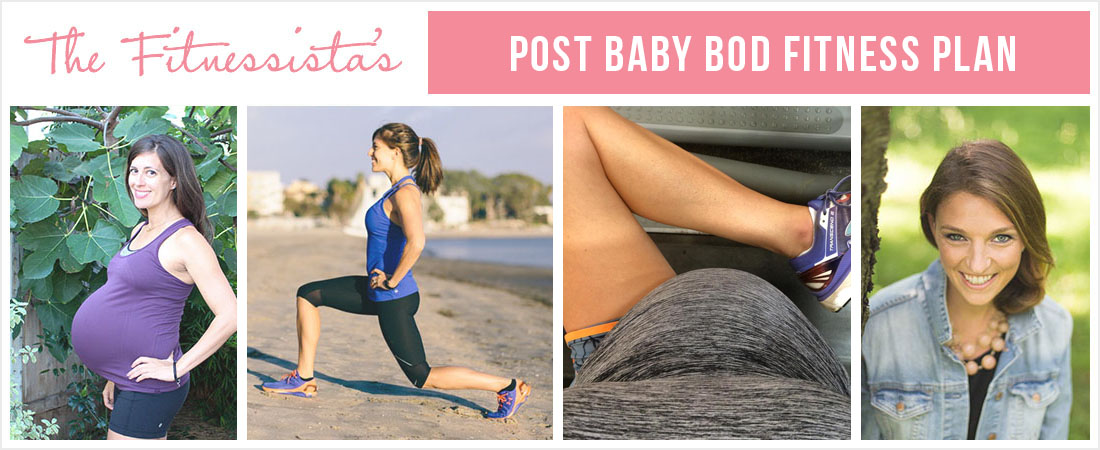Orangetheory pregnancy modifications
As we all know, Orangetheory is one of my very favorite group fitness classes under the sun. I started taking classes two years ago and took them until the second trimester of my second pregnancy. I was advised to ditch impact workouts because of a placenta issue. (Thankfully it resolved itself.)
Before I had to stop taking classes, I started needing to modify for my growing belly and for the safety of our baby. I thought it would be so helpful and cool if there was a comprehensive list of prenatal Orangetheory modifications.
So, here it is. 🙂
(With Coach Jolen; he owns the Body Fat Test here in San Diego if you want to check it out!)
I just want to throw it out there that I don’t think it’s smart to be like, “Yay, I’m pregnant! Maybe I should go check out Orangetheory and try a class!” Pregnancy isn’t a great time to try out new fitness classes or exercises unless you were doing them before you become pregnant. (An exception: you were sedentary before you became pregnant and wanted to begin a walking routine.) Wait until after the baby is here and you’re cleared to work out, feeling good again, and ready to try out new routines and classes.
If you’re pregnant and currently taking Orangetheory classes, here are some ideas and tips on how to modify along the way.
Orangetheory pregnancy modifications:
Before I dive into this post, please keep in mind that you should always talk to your doctor or midwife to access your fitness plan. Every body and pregnancy is unique, and it’s up to us to listen to our body and the advice of our medical professionals.
Should you get in the Orange zone at Orangetheory when you’re pregnant?
As far as heart rate is concerned, the “stay under 140” rule is outdated. Does that mean you should hit your max heart rate? NO. When you’re pregnant, your heart rate can change and become elevated as the body works harder to pump blood throughout your body and to the growing baby. For this reason, it’s not a super dependable measure of exertion. The talk test and perceived exertion are a better gauge for how you’re doing.
While you’re pregnant, I would not aim for the usual 12+ minutes in the Orange zone (84% of your max heart rate and above) recommendations. I would aim to stay in the green arobic zone (70-83%) and make sure you can say your address in one full breath during the entire workout. If you can’t, this is an indicator that you’re working too hard. Make sure to drink lots of water before, during, and after the workout. Avoid overheating by wearing cool and comfortable clothes.
Exercises and tools to modify:
Cardio:
As I mentioned before, I don’t recommend the 12+ minutes in the Orange zone recommendation. You can wear your heart rate strap to make sure you aren’t in the red or orange zone for too long, but I would depend on perceived exertion and the “talk test” to make sure you’re not working too hard. You should be able to get in a happy sweat, but the goal is to move and stay active/happy; not the time to push yourself to pure extremes, ya know?
It may get to a point where the rower is uncomfortable. Thankfully, they offer a spin bike or an elliptical that you can use during the treadmill or cardio sections!
Strength:
Most bodyweight and dumbbell exercises should be fine to continue throughout the pregnancy. Some exceptions: twisting motions (like woodchoppers or Russian twists), prone exercises (on your belly), and supine exercises (on your back) after the 1st trimester. If you’re doing an exercise on your back on the bench, angle the bench to an incline or perform it standing. Another great option is that the TRX is right there! If everyone else is doing chest presses on the bench on their back, you can do standing chest presses with the TRX. (More on TRX work below.)
Watch out for unilateral exercises where you could lose your balance and fall. Hold onto something for balance, or perform the exercise using both sides. Instead of bench step ups, try a reverse lunge with a knee raise. The coaches will give low impact or beginner modifications during the strength demonstrations. From what I’ve noticed, many of these modifications are pregnancy-friendly.
Plyometrics:
If you’re uncomfortable jumping -some people feel great jumping while they’re pregnant, while others don’t- perform the same exercise with both feet on the ground. Instead of squat jumps, try quick bodyweight squats. Alternating lunges are a perfect substitution for jumping lunges, and modified jumping jacks (step out one foot at a time) instead of regular jumping jacks.
Medicine ball work:
I would avoid twisting motions (crossing the midline of the body). Instead, step back into a modified plank (watch the belly to make sure it isn’t making a “cone” shape) or try some bridges, standing hip extensions, donkey kicks, or squats. When in doubt, squat it out. 😉
Core:
For prone exercises, try something on your hands and knees instead. Usually the class will be doing a “superman” on their back; you can do spinal balance or cat/cow instead.
If the class is performing core work on their back, bridge is a great option (pressing your hips up so you’re not flat on your back). If you feel uncomfortable getting onto the floor and standing up again (which can happen when the belly is getting much bigger and center of gravity is noticeably off), try a standing exercise instead, or ask the trainer what they recommend.
TRX:
TRX is an AWESOME pregnancy-friendly option, BUT watch your belly to make sure it isn’t “coning.” The emphasis on TRX is that you’re in a plank position for the exercises. To avoid extreme abdominal pressure, make sure you’re breathing (EXhale on the EXertion), and engage your transverse abdominis by gently pulling the pelvic floor up and in as the abs “hug” the baby.
If the belly starts to make a cone shape, this can indicate extra abdominal pressure, which can increase the prevalence of diastasis recti (when the abs separate to make room for the baby). If you see this happening, take it back by modifying or changing the exercise entirely.
Ab dolly:
“Farewell ab dolly, I shall see you again after baby is here.” There just isn’t really a point while you’re pregnant and working on that reverse six-pack. The ab dolly is intense core work and lots of knee tucks and roll outs. I would do spinal balance, cat/cow, bridge, or modified plank instead.
Stretching:
Stretching should feel great, but be mindful of overstretching. With the extra relaxin in the body, focus on strength and stability instead of stretching to the max. Go to where it feels good, but don’t try to push limits or get into any crazy yoga poses you’re not used to. 😉
Whew, I think that’s everything!! Something else that helped me during pregnancy was wearing a support belt. You can get them on Amazon, and it helped me feel like things weren’t bouncing or moving around too much. More of my favorite pregnancy workout gear is here!
xoxo
Gina

